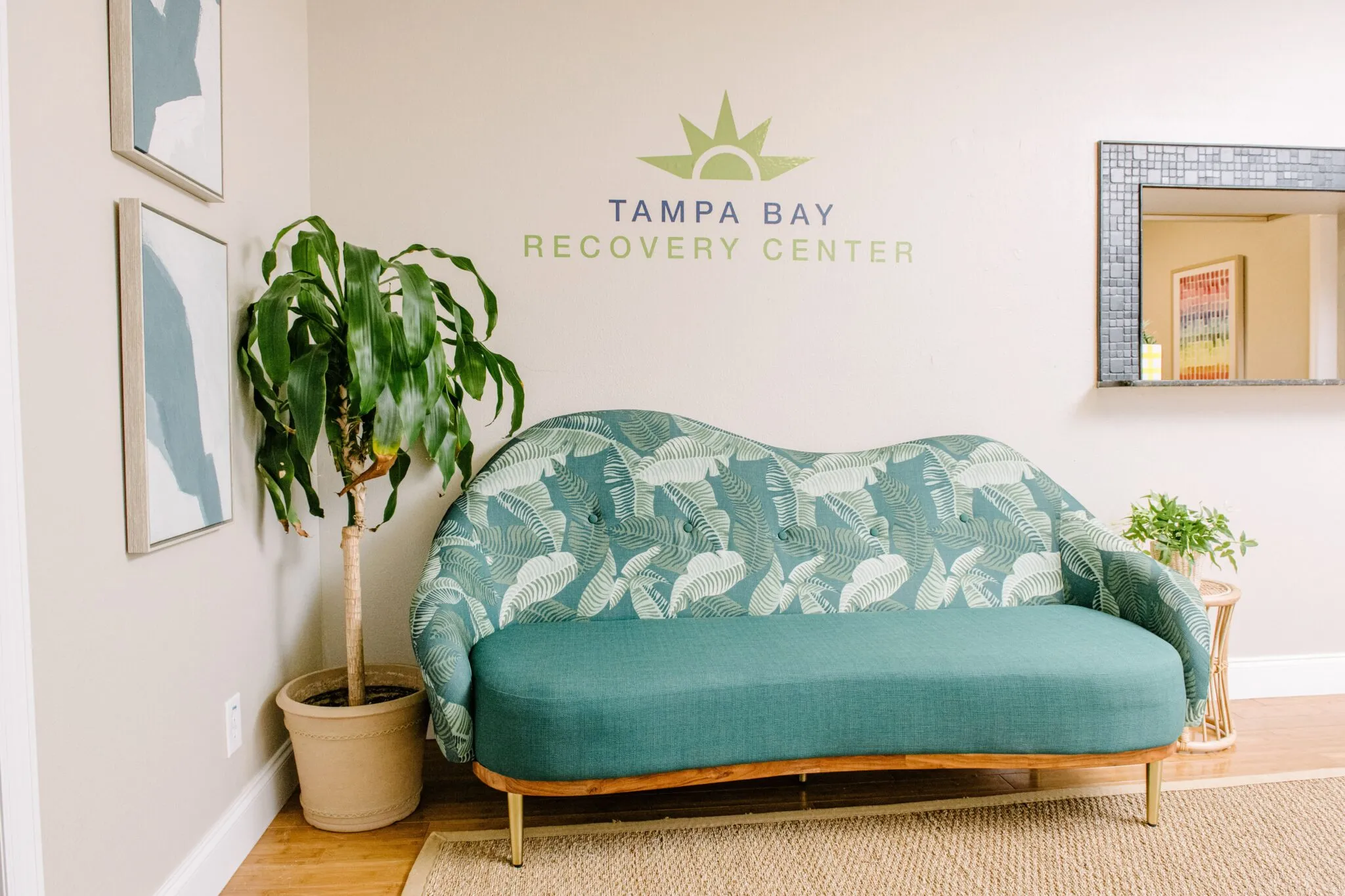Home Therapies Brainspotting Therapy

Brainspotting Therapy
Brainspotting therapy is an innovative approach for treating underlying trauma and other mental health disorders.
Brainspotting can help process disturbing memories, painful trauma, and help uncover the root cause of addiction.
If you’ve been struggling with the untreated effects of trauma linked to your addiction, or found yourself at a standstill with progress in your recovery, you may be an ideal candidate for brainspotting therapy at Tampa Bay Recovery Center.
In addition to increasing your risk for developing certain mental and behavioral health disorders, untreated trauma can also complicate your ability to stop using drugs or manage your mental health symptoms.
What is Brainspotting Therapy?
Brainspotting Therapy is a relatively new type of treatment for people whose lives have been impacted by traumatic memories, emotional pain, and certain related concerns. Brainspotting is relatively new and works to process trauma through fixed eye positions. The technique was developed by Dr. David Grand in 2003. This innovative treatment approach grew out of Dr. Grand’s experiences providing eye movement desensitization and reprocessing (EMDR) therapy.
Take Back Control:
Contact Us Now
Addiction and mental health disorder effects the lives of millions of Americans each year. Contact Creekside Recovery Group today to get the help you deserve.
TOUR
Tour our Rehab in Tampa Bay
How Does Brainspotting Work?
Brainspotting therapy is a new type of talk therapy used to treat trauma and behavioral health disorders. It works by helping clients process their trauma through fixed-eye positions.
Brainspotting is based on the principle that traumatic memories are stored in specific parts of a person’s mind. During a session, the therapist works with the patient to identify the eye position that correlates with the area of the brain that holds the traumatic memory or other distressing thought.
Eye positioning is an important part of therapy sessions, but effective communication between the therapist and the patient is also essential.
What Is Brainspotting Therapy Used For?
Brainspotting therapy can be used to treat people who have developed a variety of mental health and behavioral health disorders, including anxiety, depression, and addiction.
Brainspotting for Anxiety
People who have anxiety disorders often experience considerable physical distress in addition to excessive fear, worry, or apprehension. Brainspotting therapy harnesses the power of the mind-body connection to replace physical and psychological discomfort with healthier feelings.
Ready to Escape Addiction? Let’s get Started
Tampa Bay Recovery Center is a premier leader in the provision of addiction treatment services. If you or someone you love is in need of professional care to address a substance use disorder, reach out to us right now at (813) 733-8774 to speak with an admissions specialist who can get you started on the road to recovery.
Brainspotting for Depression
The ability of brainspotting therapy to help people process traumatic experiences can make this technique a valuable component of a comprehensive treatment plan for depression. Identifying and effectively addressing past trauma can be a transformative experience for people who have depressive disorders.
Brainspotting for Addiction
Brainspotting therapy helps people replace automatic, painful reactions with more mindful, positive ways of responding. Being able to deal with distressing thoughts or experiences in a healthy manner can be a vital skill for people who are working to achieve recovery from addiction.
What to Expect During a Therapy Session
At the beginning of a therapy session, the therapist may ask the patient to recall a specific painful memory. As the patient focuses on this memory, the therapist may then ask them to note what types of physical sensations they feel when they think about or discuss the memory.
Once the patient has identified their physical response to the distressing memory, the therapist will direct them to look in a variety of different directions. As the patient’s eyes are directed to each new position, the therapist will ask them to assess the intensity of the physical discomfort they had identified at the start of the session.
When the patient and therapist identify the eye positions that correlate with the greatest amount of physical discomfort, the patient will be directed to hold their gaze on that specific spot as they discuss the memory in greater detail.The combination of proper eye positioning and beneficial therapeutic conversation can help the patient process their experience and diminish the pain that the memory had previously caused them to feel.
Who is a Good Candidate for Brainspotting Therapy?
Determining if someone is a good candidate for brainspotting therapy can only occur after the individual has been properly assessed and received an accurate diagnosis.
Before patients receive a session, our treatment team closely reviews their history, current symptoms, and all other relevant information. We want to be sure we understand the full scope of each person’s needs before we develop their customized treatment plan.
If our assessment indicates that a patient is a good candidate for brainspotting therapy, we’ll make the appropriate recommendation, explain the features and benefits of this technique, and answer any questions the patient has before starting the session.
Overcome Addiction with evidence-based, expert care.
Brainspotting Side Effects
While everyone’s side effects of brainspotting are different, some may become uncomfortable during their sessions as energy is being moved and processed throughout the body. Common brainspotting side effects include:
Typically these symptoms last for two days at the longest. It’s important to remember that therapy is hard work and self-care is the most important thing you can do after a session.
Benefits of Brainspotting Therapy
During these sessions, clients can begin to familiarize themselves with the mind-body relationship to trauma. While your therapist gives you a simple toolkit to start the journey, you work with them to process what you learn. Some other benefits of brainspotting include:
Get Brainspotting Therapy in Tampa Bay
If traumatic memories and other distressing thought patterns have been preventing you from living a full and satisfying life, Tampa Bay Recovery Center may have the solutions you’ve been seeking. Contact us today to learn how brainspotting therapy can help you regain control of your thoughts and actions.
CONTACT US
We Are Always Here For You
Our compassionate team is ready to assist you—contact us now for confidential support tailored to your needs!












